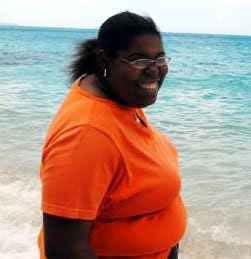
My name is Eric Vane and I am a newly arrived archaeology intern courtesy of the Friends of the National Park Service. I graduated from Beloit College in the great state of Wisconsin (which was experiencing 35 degree weather when I left) with a B.A. in Anthropology. After spending a summer walking cornfields for an archaeological firm in northern Illinois I am more than excited to escape to warmer climes and tropical jungles.
This is my second stint on St. John with Ken Wild, and The Friends of the National Park Service. My first experience lasted three weeks from May to June of 2008 predominantly on Hassel Island. I assisted with the surface collection of the Leprosarium/ Yellow Fever Hospital, and helped process the artifacts. I also worked with several Danish students who were exploring the history of Hassel Island by using the archives on St. Thomas, and St. John.
So far my six days back on St. John have seemed like a vacation in comparison to last year. Instead of hard cots and platform tents at Cinnamon Bay we have fans, electricity, and… gasp… real mattresses at Maho Bay. Instead hacking through dense jungles of thorny plants, and poisonous brush we have been in padded chairs in air conditioned labs; we know this will end soon. Despite the air conditioning we have all been eager to get into the field, and so today we went to investigate a reported gear/ship wreck off Henley Cay on the South western side of St. John. After setting anchor Katherine, Margaret and I snorkelled along the coastline until we encountered the reported “gear”, which turned out to be an old airplane engine. While Ken was diving the site and recording the find we also found some additional wreckage including what we anticipate is the plane’s wing and the wreckage of a sailboat they may have crashed into the island and sunk during one of the many hurricanes that have hit the islands in the last few decades.
Margaret and I are getting ready to move into the Cinnamon Bay campground on November first, so we shall enjoy our last few days with the fans at Maho. We have opened up the Cinnamon Bay lab, cleaned it out, and spent a couple days there this week washing ceramics from the Cinnamon Bay excavation. We also reopened an old excavation unit nearby, which has lain dormant since 2007 with the exception of a colony of biting ants whom were busy doing their own excavation. Only one 10 centimeter level has been excavated here and already a Danish coin, the smallest Taino shell bead to date and an eye inlay for a Taino wooden Zemi statue. This unit is being excavated for the reburial of the human remains that have eroded from the shoreline at Cinnamon Bay. This excavation will be stopped again for a short time as we once again travel to Hassel Island. This time we will be monitoring the removal of a very old dump at Careening Cove. There is no telling what we may encounter as the cove has been used for centuries.
Unfortunately today is Chela’s last day of work, and we will hate to see her go. Other than that I am excited to be back in the Virgin Islands, and am having a great time.
-Eric Vane-













.jpg)
.jpg)










